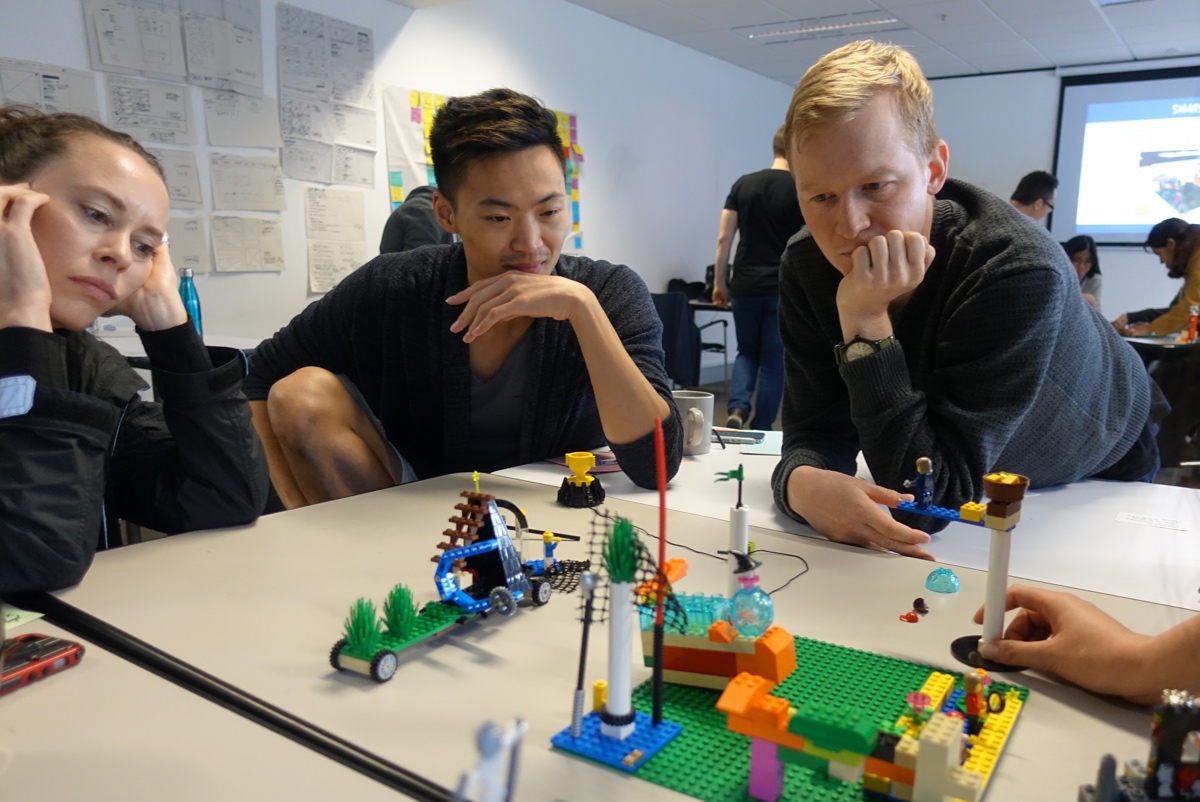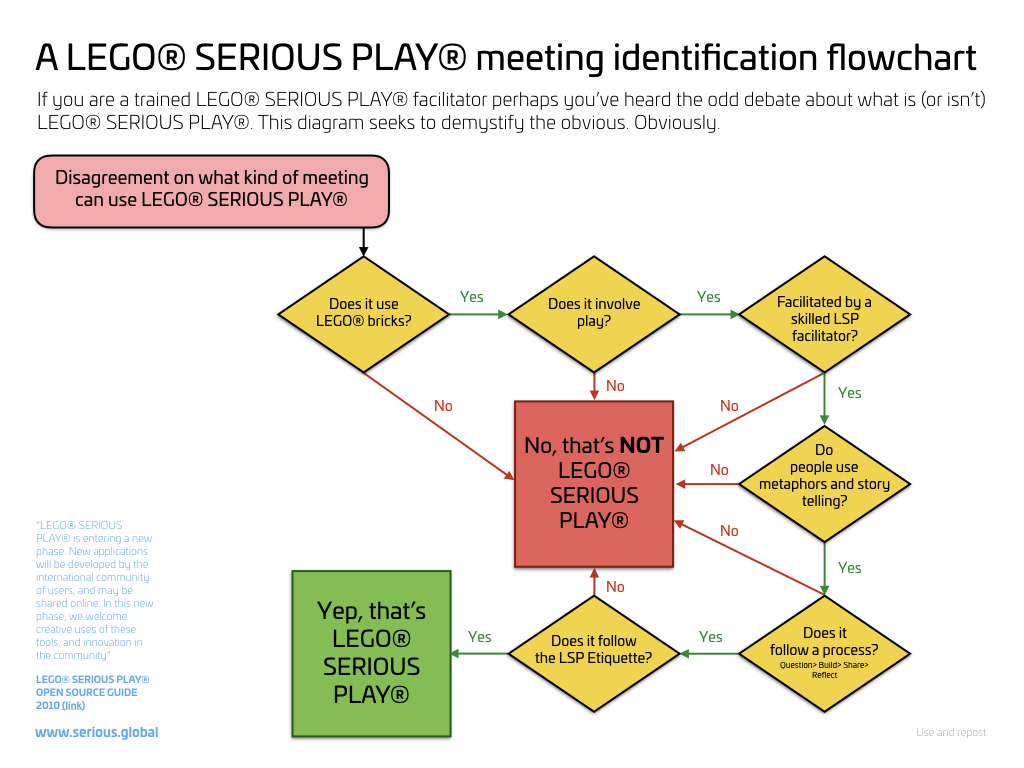
One of the challenges of using LEGO Serious Play is describing it to people. It can be so many things, trying to pin it down to help someone understand it can be difficult.
When describing it you could focus on the process, the steps, the techniques. But that only describes how you do it.
You could focus on the underlying foundational scientific theories. But that only describes why it works.
You could focus on the outcomes from a session. But that only describes narrow use cases.
One example of this is the most common definition of LSP from it’s 20 year history. That the method is a:
- Tool for strategy or vision making
- Way to define a new teams identity
- With the outcome being to formulate simple guiding principles to guide both these situations.
LSP is those things (they were the first few applications of the method), but they don’t define it’s boundaries.
Another narrow definition of LSP that has frustratingly popped up in the last 8 years (since the method was open sourced in 2010), is that of LSP as a fun team building activity. It is by far the most common request I get through my business (Pivotal Play) to run LSP team building sessions. And I say frustratingly because the method is capable of so much more than fun distraction.
Since I started using LSP full time in 2013, I’ve been unsatisfied with these descriptions. Constantly searching for a better way to describe the method that encompasses all that it can do.
I’ve come across some fantastic alternative definitions from leading facilitators:
Sebastian Simand describes LSP as a: “Kinetic, metaphorical communication and idea stimulation tool”. This description is getting at the core of what LSP is and could be. The only thing I would add in is “visual” at the start. It’s a “Visual, kinetic, metaphorical idea stimulation and communication tool”. This description is brilliant and really helped me to crystallise my thoughts on what LSP is.
Another interesting description is from Sean Blair, who puts it in the form of a flow chart in this blog post.

What I love about these descriptions is how expansive they are. They recognise that if you follow a few simple elements that are core to LSP, then LSP is a lot more flexible than just a strategy tool or team building activity.
Having taken all this in over the years where do I sit now? What’s my description of LSP?
I’ve come to this simple truth:
LEGO Serious Play is a different way to have a conversation
The “different way” bit is where all the detail is, but put simply LSP is conversation. It uses some physical tools and some steps to change the normal flow of conversation to make people think and act differently.
The strategy use of LSP is just one type of conversation it’s good for. The team identity use of LSP is just one type of conversation it’s good for. And yes even the team building use of LSP is just another type of conversation it’s good for.
From my work I’m starting to see LSP being used in education / learning, recruitment, user experience, risk management, marketing, psychology, community consultation and many, many other conversations around the world.
When you simply see LEGO Serious Play as a different way to have a conversation, the potential uses across the world are mind blowing.





